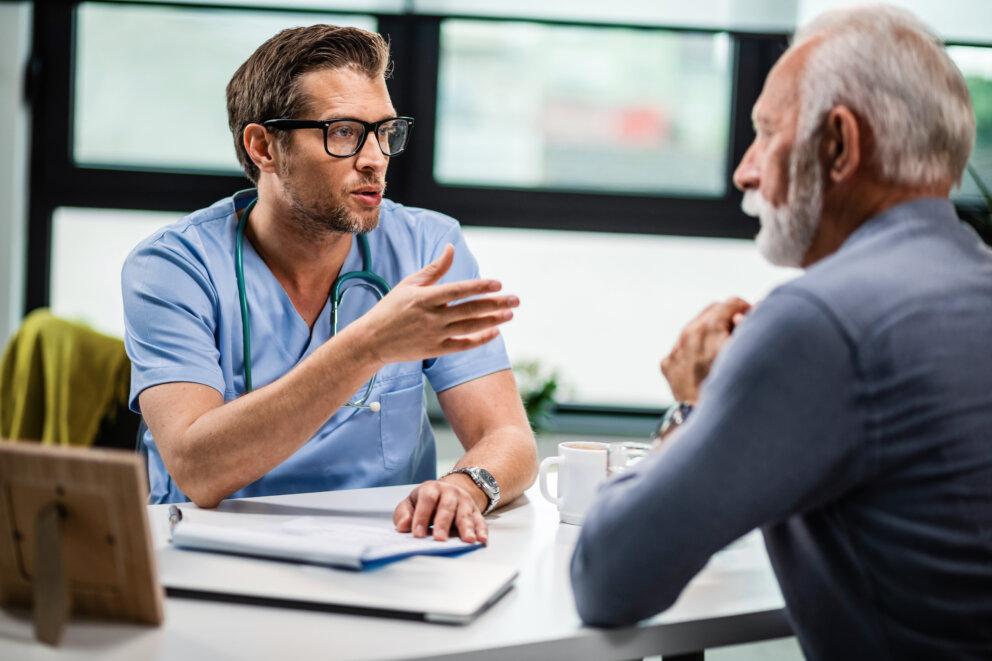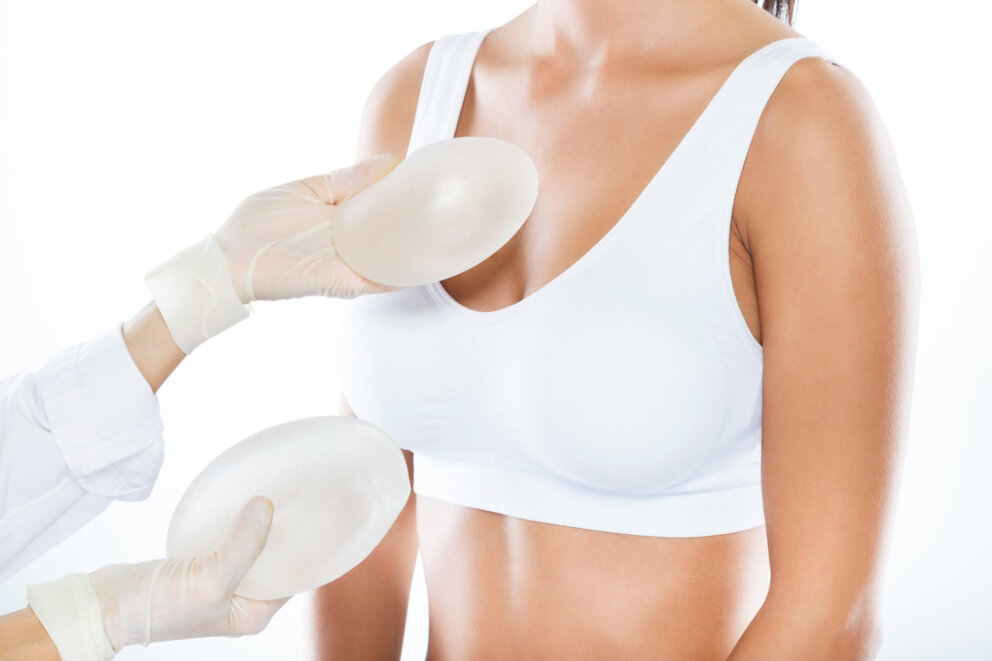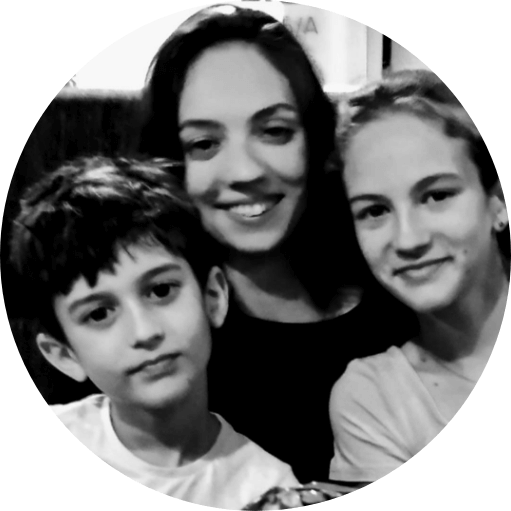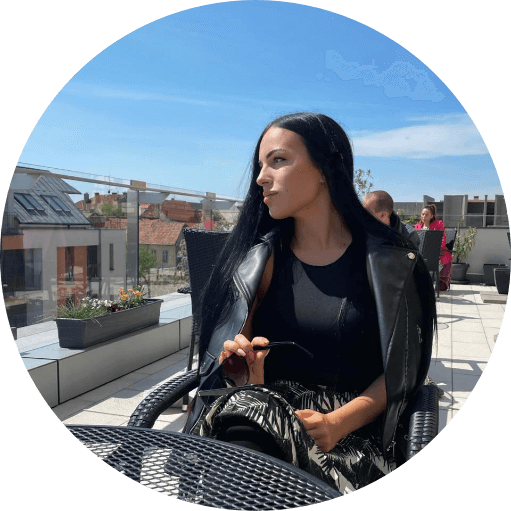The exact cause is unknown, the disease is multifactorial. Genetic predisposition, hormonal imbalance (excessive production of androgens – male sex hormones), lifestyle, stress, staying in a stuffy and dusty environment, taking certain medications (e.g. corticosteroids, some antiepileptics), using inappropriate cosmetics, certain foods and food supplements are involved in its occurrence.
In the diagnosis we rely on data on the patient’s general health, laboratory diagnostics, data on the occurrence of acne in the family, the use of medications (especially corticosteroids), we look for allergies.
Treatment
The basis of acne treatment is the reduction of sebaceous gland production, removal of comedones plugs and treatment of bacterial colonization. The main goal is to prevent scarring and pigmentation due to acne. We use local treatment, systemic treatment and complementary care.
Local treatment:
- Application of topical antibiotics (creams, solutions), vitamin A derivatives.
- Chemical peeling – removes the top part of the damaged layers of the skin, while in a few treatments we achieve softening, colour unification and improvement of its appearance, reduction of pores, reduction of oiliness and thus prevention of acne formation. Most often we use:
– surface peels – mainly based on alpha hydroxy acids (of which glycolic acid is the best known) and lipo hydroxy acids (salicylic acid, lactic acid are the best known);
– medium deep peeling with TCA acid.
The entire treatment consists of 5 to 7 sessions at 7- to 10-day intervals. The treatment itself takes a few minutes. After cleansing the skin (from make-up and impurities), a fruit acid solution is applied. During the treatment, the patient feels a slight pinching and burning sensation in the treated area. It is not advisable to apply make-up immediately after washing off the solution and treating it with a protective cream. In the sunny season of the year, it is necessary to use high SPF products on the face during the day during the peeling treatment. Peeling treatments are repeated once or twice a year, depending on the skin type.
Intense pulsed light
This treatment method uses the antibacterial effects of light beams emitted through IPL (Intense Pulsed Light) on Propionibacterium acnes. IPL light stimulates local immune mechanisms and reduces bacterial inflammation. IPL positively affects the function of overactive sebaceous glands, improves skin texture, reduces the visibility of enlarged pores and reduces pigmentation that occurs during the inflammatory process. Before the procedure, it is necessary to remove the superficial cornified layer of the skin by microdermabrasion.
With regular treatment in about two months, the condition improves. The procedure is practically painless, the patient feels a gentle pinch on the treated area. The procedure must be repeated every three weeks, the number of treatments is determined by the doctor. Sun exposure should be avoided during the treatment.
Laser treatment
The Q-switched laser reliably penetrates the skin, where it removes the impurities that are embedded in it. Consequently, it also destroys the bacteria involved in the formation of acne by its thermal action.
Carboon peel is a treatment carried out with the help of this laser. This is a “peeling” in synergy with a carbon mask. The carbon mask acts as a heat accelerator, while being rubbed into the pores to get rid of dirt and grease. The treatment is painless, there is no need to apply an anaesthetic cream before it and it can be performed all year round. The carbon mask is applied in a thin layer on the face, where it remains for about 15 minutes. The face is then treated with the laser in two consecutive steps. The first is the heating of the mask, when heat is used to bind the skin detritus to the mask. In the second step, the mask is removed together with the bound detritus. Finally, LED therapy is followed by blue light therapy, which is antibacterial. The treatment is possible all year round. It is not performed in active herpetic infection, pregnancy, six months of pregnancy and taking isotretinoin.
LED therapy is a safe, effective, non-invasive and painless treatment for all skin types. The treatment involves biostimulation – activation of skin cells by the action of light energy emitted by diodes without thermal damage. Based on the results of research into the effects of LED therapy on skin cells, it has been shown that within 20 days:
- 14% increase in collagen production,
- 48% increase in elastin production,
- 38% increase in blood circulation.
In the treatment of acne we use the effect of blue light. Blue light improves acne-prone skin, has antibacterial and cleansing effects. Improves the appearance of oily skin, reduces the amount of sebum. It is fully usable even for sensitive skin. The green light reduces pigmentation by penetrating to the basal layer. Yellow light treats redness and also has detoxifying and smoothing effects. Improves lymphatic and blood circulation. Red light increases the production of collagen in the skin, leads to the restart of regenerative mechanisms and stimulates fibroblasts. Red light is absorbed by the blood and tissues with a high water content.
Total acne treatment
- hormonal (most commonly oral contraceptives with an anti-androgenic effect)
- antibiotics
- vitamin A derivatives (Roaccutane cps.) – long-term treatment (can last more than half a year), during which regular laboratory control of the levels of hepatic tests, cholesterol and lipids is necessary. Due to the teratogenic effect of isotretinoin, the use of contraception is required in women of childbearing age during treatment and for a month after its termination. Patients should avoid concomitant use of vitamin A because of the potential for accentuation of symptoms of hypervitaminosis A. A transient worsening of symptoms may occur early in therapy. Treatment is mostly well tolerated. The patient may experience some side effects such as. dryness of the skin and mucous membranes, joint pain, muscle pain, cheilitis, blepharoconjunctivitis.
Complementary care:
- professional non-invasive skin cleansing (hydrabeauty by Frais),
- local treatment of inflammation with Q switched laser,
- microdermabrasion,
- laser peeling,
- chemical peeling,
- treatment with enriched blood plasma (dracula therapy) uses the natural regenerative effect of blood plasma. The advantage of the treatment is that compared to other techniques, it is your own blood and not foreign substances. This method evolved from autohaemotherapy – that is, from the treatment with one’s own blood, which is used to boost immunity. Later it began to be used in dentistry for regeneration of gums affected by chronic inflammation, in orthopaedics, traumatology and in the treatment of pain in degenerative joint diseases. In the treatment with enriched blood plasma, the most important biorevitalizing role is played by the platelets that are present in the blood. Platelets are the most important cells in the wound healing process, leading to the formation of collagen. Platelet activation releases a large number of growth factors that stimulate fibroblasts and activate collagen production.

























